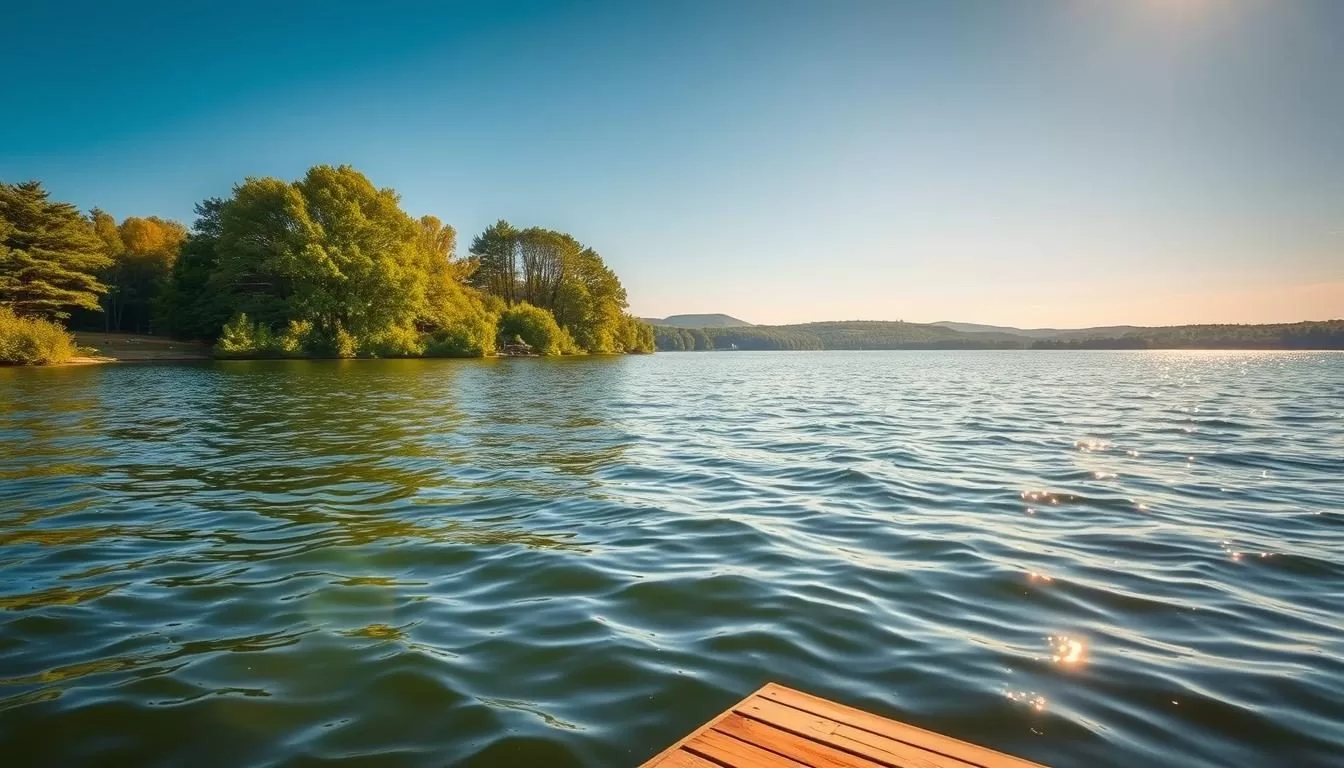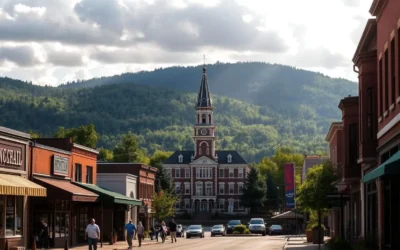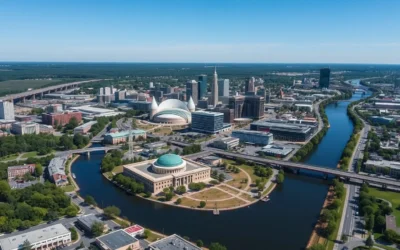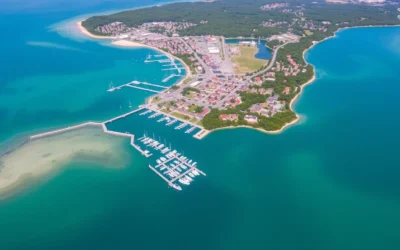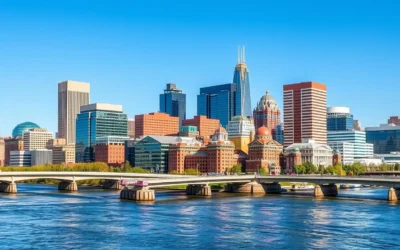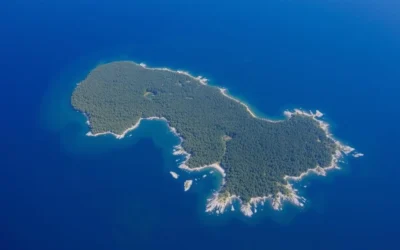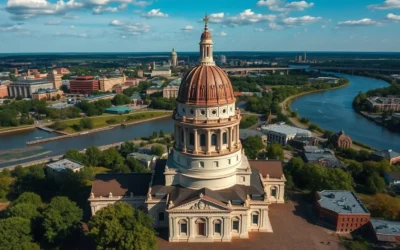Planning a trip to Michigan can be a thrilling experience, with its diverse range of activities and stunning landscapes across the Upper and Lower Peninsulas. The state’s distinct four-season climate means that the time of your visit can greatly impact your experience.
To make the most of your trip, it’s essential to understand the weather patterns and seasonal variations. This guide will help you navigate the best times to visit, ensuring you enjoy the ideal balance of pleasant weather and exciting activities.
Whether you’re looking for summer beach adventures, fall foliage tours, or winter sports, Michigan has something to offer. By choosing the right time for your visit, you’ll be able to maximize your experience and create unforgettable memories.
Understanding Michigan’s Four-Season Climate
As you plan your trip to Michigan, understanding the state’s four-season climate is crucial. Michigan’s climate varies significantly throughout the year, with each season offering unique experiences for visitors.
Temperature Variations Throughout the Year
Michigan’s temperature varies greatly from season to season. In the summer, temperatures can reach up to 83°F (28°C) in July, while in the winter, they can drop to 18°F (-8°C) in January. The average highs during summer months (June-August) are between 77-83°F (25-28°C), making them ideal for water activities.
The temperature fluctuations make each season unique, with spring and fall serving as transitional periods with more moderate temperatures.
Precipitation Patterns Across Michigan
Michigan’s precipitation patterns vary by region. The western side of the state typically receives more snowfall due to the “lake effect” from Lake Michigan. The state averages about 31-34 inches of annual rainfall, with May being the wettest month, receiving around 3.5 inches of precipitation.
| Season | Average Temperature | Precipitation |
|---|---|---|
| Summer | 77-83°F (25-28°C) | Average rainfall: 3.5 inches in May |
| Winter | 18°F (-8°C) | 34.5 inches of snowfall |
| Spring | Moderate | Variable rainfall |
| Fall | Moderate | Variable rainfall |
Summer in Michigan: June Through August
As the weather warms up, Michigan transforms into a hub of summer fun, with numerous festivals and events. The state’s abundant water resources and warm temperatures make it an ideal time to visit for those who enjoy outdoor activities.
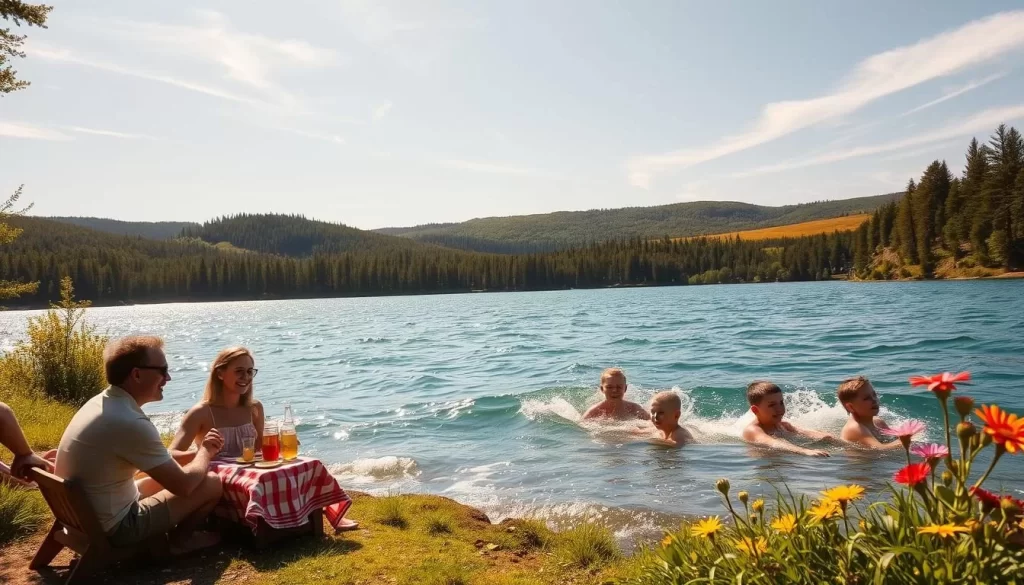
Peak Tourist Season Benefits and Drawbacks
Summer represents Michigan’s peak tourist season, offering a wide range of benefits, including perfect weather for swimming, boating, and fishing on the Great Lakes and inland waters. However, popular spots like Mackinac Island and Sleeping Bear Dunes can get crowded, making it essential to book accommodations in advance.
Summer Festivals and Outdoor Concerts
Michigan’s summer calendar is filled with exciting festivals and outdoor concerts. You can enjoy music festivals like the Detroit Jazz Festival, cultural celebrations, and events that showcase the state’s rich heritage. The warm weather creates an ideal atmosphere for outdoor concerts and festivals, making it a great experience for visitors.
Water Activities on Michigan’s Lakes
With over 11,000 inland lakes and four Great Lakes, Michigan offers endless opportunities for water activities. You can enjoy swimming, kayaking, paddleboarding, and boating during the summer months, making the most of the state’s natural beauty. Popular spots along Lake Michigan and other lakes are perfect for a refreshing summer day.
Fall in Michigan: September Through November
Michigan’s fall season, spanning from September to November, offers a unique blend of natural beauty and cultural experiences. During this period, the state transforms with the changing leaves, creating a picturesque landscape.
The fall season is known for its comfortable temperatures, ranging from the mid-40s to low 70s°F (7-23°C), making it ideal for outdoor activities like hiking, biking, and exploring the state’s natural beauty without the summer heat or humidity.
Scenic Beauty and Drives
One of the highlights of fall in Michigan is the stunning fall foliage. The state’s landscape is painted with vibrant colors, creating a perfect backdrop for scenic drives. Routes like the Tunnel of Trees (M-119) and the Lake Michigan Circle Tour are particularly breathtaking during this time.
Harvest Festivals and Events
Fall in Michigan is also a time for harvest festivals and autumn events. The state’s agricultural bounty is celebrated through various festivals, including those at apple orchards, cider mills, and vineyard harvests. These events offer authentic seasonal experiences and are a great way to experience the local culture.
Weather and Outdoor Exploration
The weather during fall is typically characterized by crisp, sunny days and cooler evenings, making it perfect for outdoor exploration. The comfortable temperatures and the lack of crowds after Labor Day make it an ideal time to visit popular attractions and enjoy the state’s natural beauty.
| Activity | September | October | November |
|---|---|---|---|
| Hiking | Excellent | Excellent | Good |
| Biking | Excellent | Excellent | Good |
| Scenic Drives | Good | Excellent | Good |
| Harvest Festivals | Good | Excellent | Good |
Winter in Michigan: December Through February
Winter in Michigan is a season of adventure, with a range of activities that cater to different interests. The state’s diverse landscape transforms into a winter wonderland, offering something for everyone.
Winter Sports and Snow Activities
Michigan’s winter landscape is perfect for a variety of snow activities. You can enjoy downhill skiing at one of the over 40 ski resorts, or experience the thrill of cross-country skiing on hundreds of miles of trails. Other winter sports include snowmobiling, ice fishing, and snowshoeing. The state’s abundant snowfall, especially in the Upper Peninsula, makes it a haven for winter sports enthusiasts.
- Explore the snowy terrains on a snowmobile or via cross-country skiing.
- Enjoy downhill skiing at one of the many ski resorts.
- Experience the tranquility of snowshoeing through Michigan’s winter landscapes.
Indoor Cultural Attractions
When you need a break from the cold, Michigan’s indoor cultural attractions are a great place to visit. The state is home to world-class museums like The Henry Ford, Detroit Institute of Arts, and Frederik Meijer Gardens, which offer special exhibitions and events during the winter months. These attractions provide a warm and culturally enriching experience.
Some highlights include:
- Special exhibitions at The Henry Ford and Detroit Institute of Arts.
- Visiting the beautiful indoor gardens at Frederik Meijer Gardens.
Holiday Events and Celebrations
Winter in Michigan is also a time for festive celebrations. The holiday season brings a variety of events across the state, including Holiday Nights at Greenfield Village, Christmas markets in Frankenmuth (Michigan’s Little Bavaria), and New Year’s Eve events in major cities. These events add to the festive atmosphere, making Michigan a great place to be during the holidays.
Some of the holiday events to look out for include:
- Holiday Nights at Greenfield Village.
- Christmas markets in Frankenmuth.
- New Year’s Eve celebrations in Detroit and other major cities.
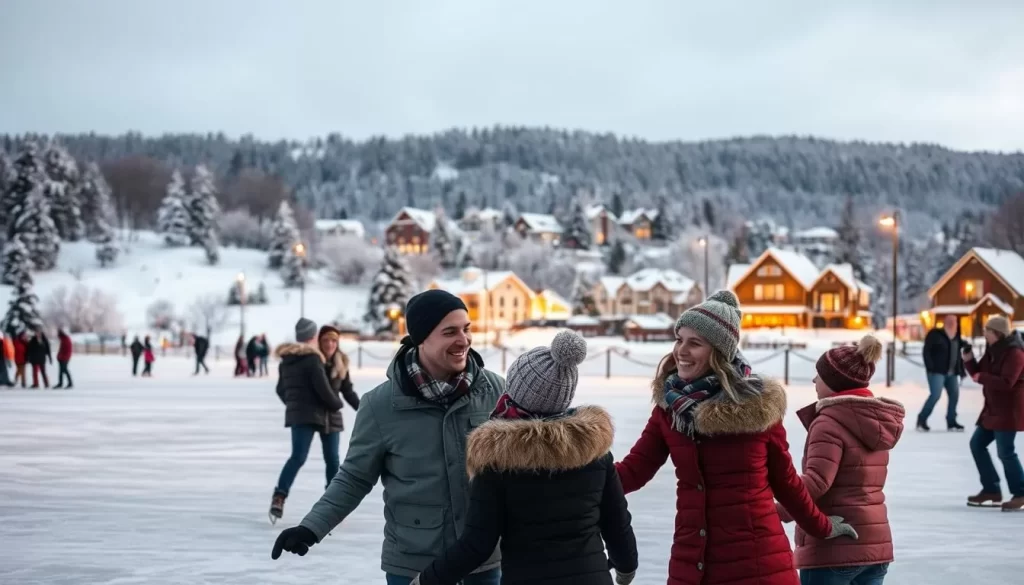
Spring in Michigan: March Through May
Michigan’s spring season, from March to May, offers a unique blend of natural beauty and cultural experiences. As the snow melts and temperatures rise, the state transforms into a vibrant landscape, making it an ideal time to visit for those who enjoy mild weather and outdoor activities.
Blooms and Nature Awakening
During spring, Michigan’s nature awakens with colorful blooms, from cherry blossoms in Traverse City to tulip displays in Holland, home to the famous Tulip Time Festival in May. The gradual warming of temperatures from March (40s°F/4-9°C) through May (60s°F/15-20°C) creates increasingly favorable conditions for outdoor exploration.
Fewer Crowds and Better Rates
One of the advantages of visiting Michigan in the spring is the significant value it offers. With lower accommodation rates and fewer crowds at popular attractions, it’s an excellent time to visit for budget-conscious travelers seeking more peaceful experiences.
Events and Activities
Spring is also a time for various events and activities. The season hosts maple syrup festivals in March, Earth Day celebrations in April, and the opening of farmers markets and outdoor concert series in May. Additionally, the spring thaw creates spectacular waterfall viewing opportunities, and wildlife viewing becomes more accessible as migratory birds return and animals emerge from winter dormancy.
Michigan, United States: Best Months for a Weather-Savvy Trip
For travelers looking to make the most of their trip to Michigan, identifying the optimal months to visit is essential. The state’s diverse climate and range of activities mean that some months are more suitable than others for a weather-savvy trip.
When considering the best time to visit Michigan, the spring and fall seasons stand out due to their mild weather and array of outdoor activities. These seasons offer a perfect balance for those who want to enjoy nature without the extremes of summer heat or winter cold.
May and June: Perfect Balance of Weather and Activities
May and June are characterized by warming temperatures, typically in the 60s and 70s°F (15-25°C), with lower humidity compared to the peak summer months. These months provide extended daylight hours and the beginning of summer activities without the large crowds, making them ideal for outdoor enthusiasts.
September and October: Ideal for Fall Experiences
September and October showcase Michigan at its most colorful, with spectacular fall foliage, harvest festivals, and pleasant temperatures that are perfect for outdoor exploration. Early fall maintains warm enough temperatures for water activities on warmer days, while also being ideal for hiking, biking, and scenic drives.
| Month | Average Temperature | Activities |
|---|---|---|
| May | 60s-70s°F (15-25°C) | Outdoor activities, beginning of summer events |
| June | 70s-80s°F (25-30°C) | Summer activities, extended daylight |
| September | 60s-70s°F (15-25°C) | Fall foliage, harvest festivals |
| October | 50s-60s°F (10-15°C) | Fall foliage, outdoor exploration |
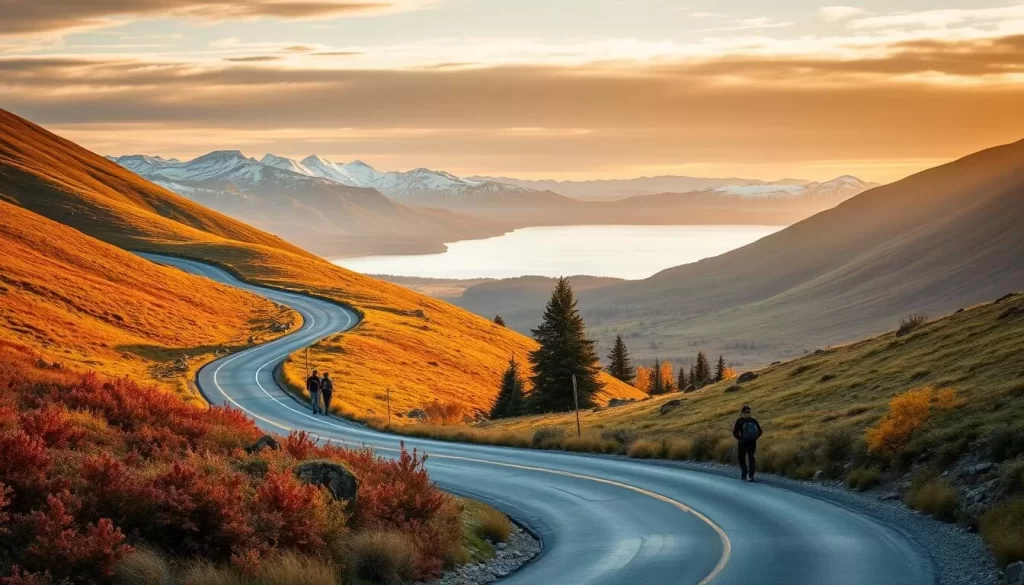
Exploring Michigan’s Upper Peninsula
Michigan’s Upper Peninsula is a treasure trove of natural beauty, offering experiences that range from the majestic Tahquamenon Falls to the rugged landscapes shaped by Lake Superior. As you explore this region, you’ll encounter a diverse range of landscapes and activities that make it a unique destination.
Tahquamenon Falls State Park
Tahquamenon Falls State Park is one of the Upper Peninsula’s crown jewels, featuring the Tahquamenon Falls, which is one of the largest waterfalls east of the Mississippi River. The park encompasses 50,000 acres of pristine wilderness, with the Upper Falls being a highlight, surrounded by lush forests and offering breathtaking views.
The best time to visit Tahquamenon Falls State Park is during late spring when the snowmelt creates a powerful water flow, or during fall when the surrounding forest displays vibrant autumn colors against the amber-colored water.
Weather Considerations for Upper Peninsula Travel
When planning your trip to the Upper Peninsula, it’s essential to consider the weather. The region experiences more extreme conditions than the Lower Peninsula, with colder temperatures and significantly more snowfall in winter. The western portions can receive over 200 inches of snow annually due to lake effect snow from Lake Superior.
Summer (July-August) provides the most reliable weather for Upper Peninsula exploration, though you should pack layers as evening temperatures can drop significantly, especially near Lake Superior. Understanding the time of year and its impact on your travel plans is crucial for a successful trip.
Michigan’s Lower Peninsula Highlights
Michigan’s Lower Peninsula is a treasure trove of diverse experiences, ranging from the serene Great Lakes shorelines to vibrant urban centers.
Great Lakes Shoreline Experiences
The western shoreline along Lake Michigan boasts stunning dune formations and charming beach towns like Grand Haven, Holland, and Saugatuck. Summer and early fall are the best times to visit these destinations, enjoying water activities and the scenic beauty of the dunes.
The eastern shoreline along Lake Huron provides a more rugged, less developed coastline with historic lighthouses, maritime museums, and fishing opportunities.
Urban Exploration in Detroit and Grand Rapids
Detroit, Michigan’s largest city, has undergone significant revitalization, featuring world-class museums like the Detroit Institute of Arts, a vibrant music scene, and professional sports teams. The best time to visit Detroit is during spring and fall when moderate temperatures make urban exploration most comfortable.
Grand Rapids, known as “Beer City USA,” offers a thriving craft brewery scene, the Frederik Meijer Gardens & Sculpture Park, and a walkable downtown area with restaurants and cultural attractions, showcasing the city’s rich culture and art.
Outdoor Activities by Season
You can enjoy various outdoor activities in Michigan, tailored to the changing seasons. Michigan’s diverse landscape and climate offer a wide range of experiences, from water sports in the summer to snow sports in the winter.
Hiking and Biking Trails
Michigan’s extensive trail system is perfect for hiking and biking, with over 12,500 miles of state-designated trails. The Iron Belle Trail, the longest designated state trail in the nation, and the North Country National Scenic Trail offer segments for different seasons and skill levels. Fall is an ideal time for hiking and biking, with comfortable temperatures and spectacular foliage.
Water Sports and Beach Activities
Summer is peak season for water-based activities on Michigan’s 11,000+ inland lakes and four Great Lakes shorelines. You can enjoy swimming, kayaking, paddleboarding, sailing, and fishing from June through August. Beach activities peak during summer months when Lake Michigan water temperatures can reach the 70s°F (21-26°C).
| Season | Outdoor Activities |
|---|---|
| Spring | Wildflower hikes, birdwatching, fishing |
| Summer | Swimming, kayaking, paddleboarding, sailing |
| Fall | Hiking, biking, foliage viewing |
| Winter | Downhill skiing, cross-country skiing, snowmobiling, ice fishing |
Cultural Events and Festivals Calendar
You’ll find a diverse range of cultural events and festivals in Michigan, happening throughout the year. Michigan’s event calendar is packed with exciting offerings that cater to diverse interests, from music festivals to art shows and sporting events.
Major Annual Events Worth Planning Around
Michigan hosts hundreds of festivals and cultural events throughout the year, with the most robust calendar occurring from May through October. Some major annual events worth planning your trip around include the National Cherry Festival in Traverse City (July), Tulip Time in Holland (May), the Detroit Jazz Festival (Labor Day weekend), and the UP200 sled dog races in Marquette (February).
| Event | Location | Time of Year |
|---|---|---|
| National Cherry Festival | Traverse City | July |
| Tulip Time | Holland | May |
| Detroit Jazz Festival | Detroit | Labor Day weekend |
| UP200 sled dog races | Marquette | February |
Local Cultural Experiences
Michigan’s rich cultural heritage is celebrated through ethnic festivals highlighting the state’s diverse communities. You’ll find something for everyone, with music festivals spanning genres from classical to electronic. Local cultural experiences vary by region, from Bavarian-themed Frankenmuth to the Dutch heritage of Holland and the Finnish influence in the Upper Peninsula.
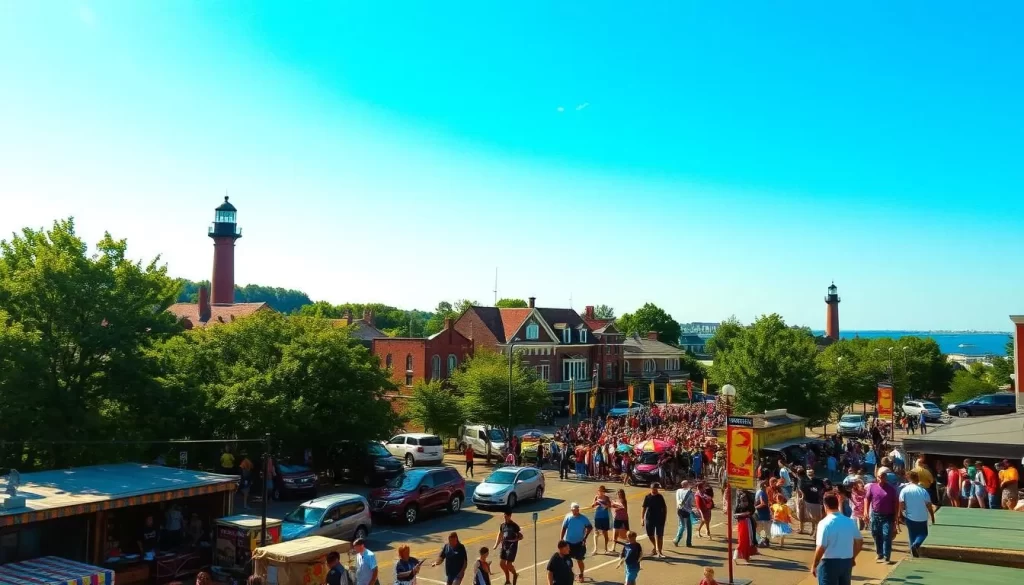
Accommodation Options Throughout the Year
The Great Lakes State provides numerous accommodation choices, ensuring a comfortable stay for your Michigan adventure. Michigan offers diverse accommodation options throughout the year, though availability and pricing fluctuate significantly between peak summer season and quieter winter months.
During the peak summer season, popular destinations like Mackinac Island and Traverse City experience high demand, making advance reservations essential. In contrast, the shoulder seasons (May-June and September-October) offer a more relaxed atmosphere and significant savings of 20-50%.
Peak vs. Off-Season Rates
Understanding the difference between peak and off-season rates can help you plan your trip more effectively. You’ll find the highest rates during summer (late June through August), while significant savings can be found during the shoulder seasons.
For instance, visiting during May-June or September-October can provide an ideal balance of pleasant weather and lower rates, making your experience more enjoyable and budget-friendly.
Types of Lodging Available
Michigan’s accommodation types range from luxury lakefront resorts and historic grand hotels to cozy cabins, vacation rentals, campgrounds, and boutique B&Bs. Each type offers a different perspective on the Michigan adventure.
For a unique experience, consider staying in lighthouse keeper’s quarters, renovated barns, or treehouse rentals that connect you more deeply to Michigan’s natural environment and heritage.
Transportation Tips for Michigan Travel
When planning your trip to Michigan, understanding the transportation options available is crucial for a smooth journey. Michigan is a large state with diverse landscapes and attractions, making transportation a key consideration.
Navigating Winter Road Conditions
During winter months (December-March), be prepared for potential snow and ice conditions, especially in northern areas and the Upper Peninsula where lake effect snow can create challenging driving situations. The Michigan Department of Transportation maintains a helpful website and mobile app providing real-time road conditions, construction updates, and webcams to help you navigate safely.
Public Transportation Options
In major cities like Detroit, Grand Rapids, and Lansing, public transportation options are available. For example, the Capital Area Transportation Authority (CATA) runs Lansing’s public transit, offering a green way to see the city. CATA buses cover Lansing, East Lansing, and nearby towns, making it easy to reach the city’s best spots. You can also use Amtrak rail service and Indian Trails bus lines for intercity connections.
Packing Essentials for Each Season
Packing the right gear for your Michigan trip can make all the difference in your travel experience. Michigan’s climate is known for its variability, with significant changes in weather conditions throughout the year. To ensure you’re prepared, it’s essential to understand the state’s weather patterns and pack accordingly.
Summer Packing List
For summer visits (June-August), pack lightweight, breathable clothing and swimwear. Don’t forget sun protection like hats, sunglasses, and sunscreen, as well as insect repellent. A light jacket or sweater may also be necessary for cooler evenings, especially near the Great Lakes.
Fall Packing List
In the fall (September-November), layering is key. Bring medium-weight jackets, sweaters, scarves, and comfortable walking shoes. Rain gear is also a good idea, as precipitation increases in some regions during this time.
Winter Packing List
For winter visits (December-February), you’ll need serious cold-weather gear, including insulated, waterproof boots, a heavy winter coat, thermal layers, hat, gloves, and scarf. If you plan to explore outdoor areas, consider ice grippers for your shoes.
Regardless of the season, comfortable walking shoes are a must, as Michigan’s natural attractions and city explorations often involve significant walking on varied terrain. Consider activity-specific gear based on your planned experiences, such as hiking boots or water shoes.
Michigan’s Culinary Scene Through the Seasons
The Great Lakes State’s culinary landscape is deeply influenced by the seasons, with each one bringing its own unique flavors and festivals. Michigan’s food scene is a dynamic reflection of the state’s agricultural bounty and cultural diversity, evolving throughout the year.
Seasonal Local Specialties
As the seasons change, so do the local specialties. In the spring, asparagus, morel mushrooms, and rhubarb take center stage. Summer brings an abundance of cherries, blueberries, and peaches, while fall celebrates the apple harvest and grape harvests in the wine regions. Winter comfort foods include pasties, a specialty of the Upper Peninsula with Cornish mining heritage, and hearty stews.
Food Festivals and Culinary Events
Michigan hosts various food festivals throughout the year, something everyone can enjoy. The National Cherry Festival in Traverse City, Asparagus Festival in Hart, and National Blueberry Festival in South Haven are just a few examples. The state’s growing wine, cider, and distillery scenes offer tastings and tours, with special events during harvest seasons.
Weather-Related Travel Tips and Precautions
To make the most of your Michigan trip, staying informed about the weather is vital. Michigan’s climate is known for its variability, with significant changes possible even within a single day. Understanding and preparing for these changes can greatly enhance your travel experience.
Preparing for Sudden Weather Changes
Michigan’s position surrounded by the Great Lakes creates unique weather patterns that can change rapidly. This requires travelers to plan trips with flexibility and awareness of potential conditions. For instance, during winter months, it’s essential to check road conditions before traveling and carry an emergency kit in your vehicle.
- Be aware of thunderstorm patterns during summer, which typically occur in the afternoon and evening.
- Monitor weather alerts for severe storm warnings that might affect boating or outdoor activities.
- Pack layers for the shoulder seasons (spring and fall) as temperatures can swing by 20-30 degrees within a day.
Emergency Planning for Extreme Weather
In case of extreme weather events, familiarize yourself with local emergency procedures and shelter locations. This is particularly important during tornado season (spring and summer) or when winter storms are possible. Downloading reliable weather apps specific to Michigan regions before your trip can also help you stay ahead of weather changes.
| Season | Weather Conditions | Precautions |
|---|---|---|
| Winter | Severe snowstorms, “lake effect” snow | Check road conditions, carry an emergency kit |
| Summer | Thunderstorms, occasional tornadoes | Monitor weather alerts, be aware of thunderstorm patterns |
| Spring/Fall | Variable temperatures, potential for rapid changes | Pack layers, stay updated on weather forecasts |
Conclusion
Whether you’re looking for outdoor adventures or cultural experiences, Michigan has something for everyone throughout the year. The state’s diverse climate means that each season offers unique experiences that showcase its natural beauty, cultural heritage, and recreational opportunities.
The best time to visit Michigan depends on your personal interests, but spring and fall generally offer the most balanced combination of pleasant weather, reasonable prices, and accessible activities. From the rugged wilderness of the Upper Peninsula to the cultural richness of its cities, Michigan rewards weather-savvy travelers with authentic experiences year-round.
With its welcoming communities, natural wonders, and four distinct seasons, Michigan ensures there’s always something new to explore on your next trip to this remarkable place.
The above is subject to change.
Check back often to TRAVEL.COM for the latest travel tips and deals.
Here are some Tours & Sightseeing suggestions that might pique your interests!
